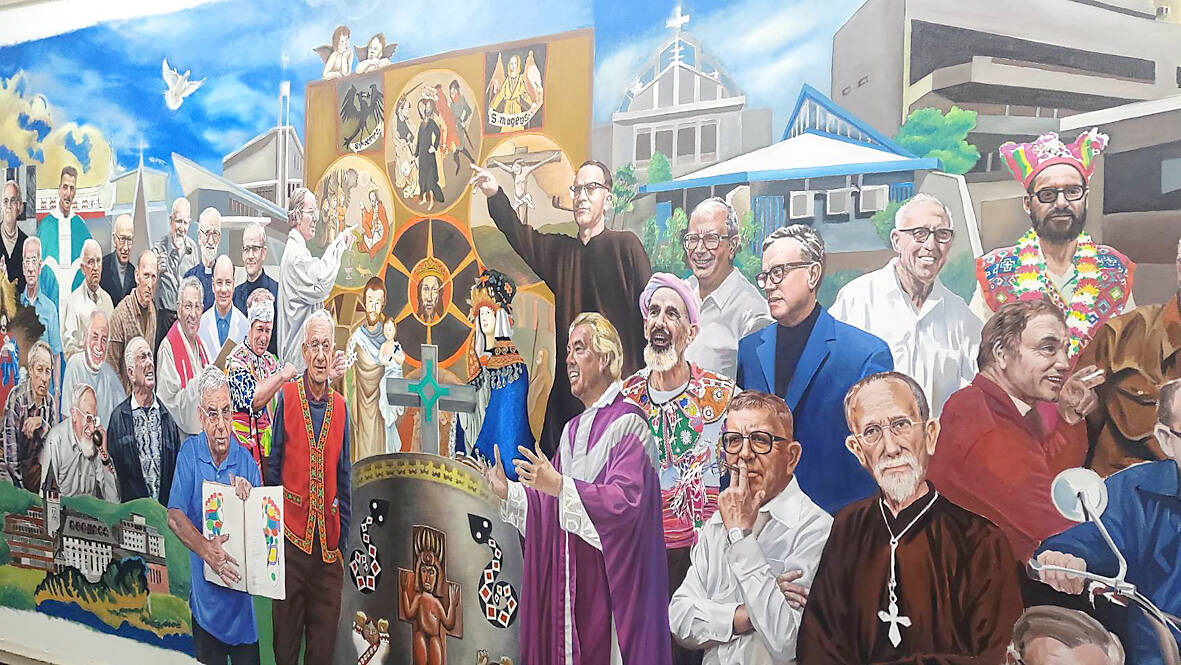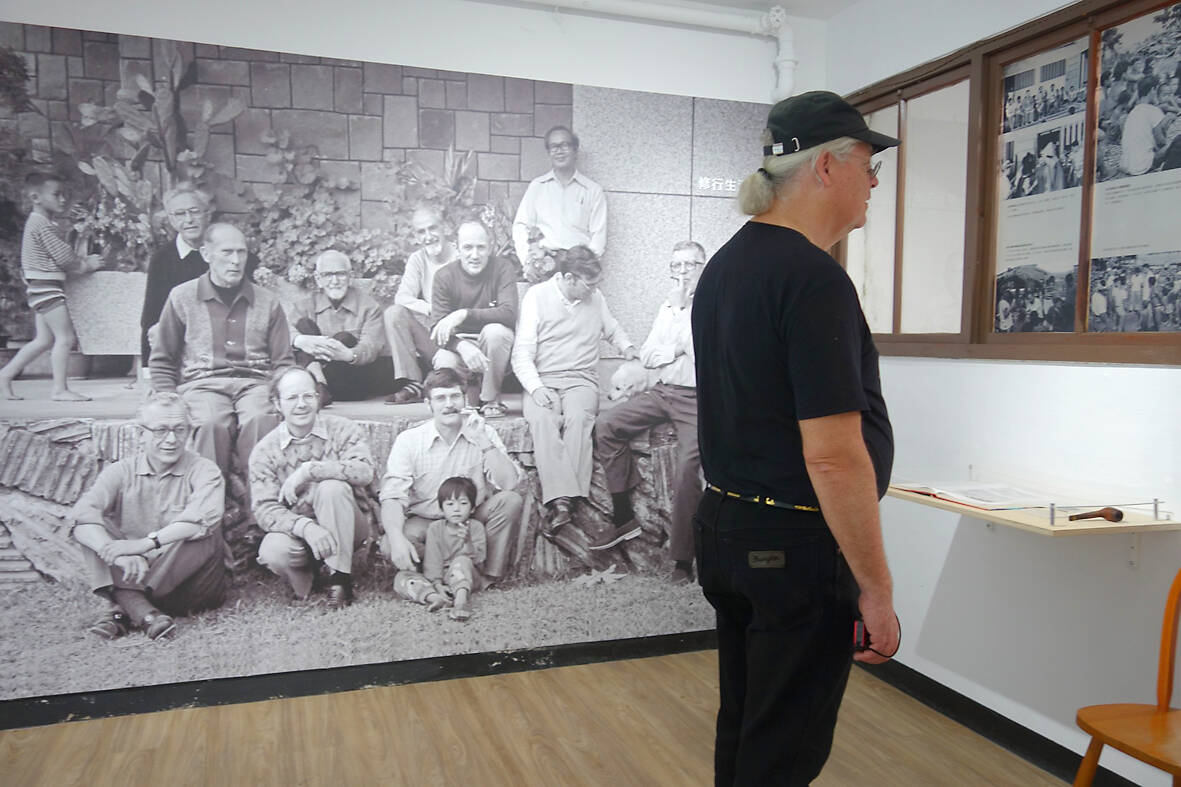Founded in 2016, the Bethlehem Mission Society Friendship Circle connects friends, organizes community events and promotes the Bethlehem Mission Society, a Catholic organization. The Friendship Circle will commemorate over 70 years of Mission Society activity in Taiwan this month with an art exhibition beginning tomorrow. A 33 artist residency at the Bethlehem Mission Society House, which is located on Hangchou Street (杭州街) in the middle of Taitung, will also be open for public viewing.
“Works expressing the clergy’s devotion,” will be on display, according to a press-release, including artwork by artists of the Puyuma indigenous community. There will be sculpture, illustrations and big canvas paintings created by people “from a diverse background” that are united by a “mutual theme” — that is, “to record and pass on the touching stories of the Bethlehem Mission Society.”
The Bethlehem Mission Society (Societas Missionum Exterarum de Bethlehem in Helvetia or SMB), is a Catholic religious order that was founded in Immensee, Switzerland in 1895. Originally headquartered in Northeast China, the Mission Society relocated to Taiwan in 1953.

Photo courtesy of Bethlehem Mission Society
After establishing its headquarters in Taitung County, the mission helped found St. Mary’s Hospital as well as several local nursing homes, among them, St. Joseph’s Kung-Tung Technical Senior High School (私立公東高級工業職業學校) which was founded by the Taiwan mission’s founder, Father Jakob Hilber, in 1960.
In addition to missionary work, SMB priests and volunteers have, over subsequent decades, built more schools and hospitals, as well as professional training centers and kindergartens, often in remote, mountainous areas populated by aboriginal people.
Art and creativity has long be practiced and promoted by the clergy who are said to decorate their chapels and houses with art pieces made from “recycled and found materials” which has “deeply inspired” local artists.

Photo courtesy of Bethlehem Mission Society
■ Bethlehem Love Art Exhibition, Taitung County Arts Center (台東縣藝文中心), 25, Nanjing Road, Taitung City (台東市南京路25號); open house 34 Hangjhou Street, Taitung City (台東縣台東市杭州街34號)
■ Until April 16, open Tuesday through Sunday from 9am to 5pm

April 14 to April 20 In March 1947, Sising Katadrepan urged the government to drop the “high mountain people” (高山族) designation for Indigenous Taiwanese and refer to them as “Taiwan people” (台灣族). He considered the term derogatory, arguing that it made them sound like animals. The Taiwan Provincial Government agreed to stop using the term, stating that Indigenous Taiwanese suffered all sorts of discrimination and oppression under the Japanese and were forced to live in the mountains as outsiders to society. Now, under the new regime, they would be seen as equals, thus they should be henceforth

Last week, the the National Immigration Agency (NIA) told the legislature that more than 10,000 naturalized Taiwanese citizens from the People’s Republic of China (PRC) risked having their citizenship revoked if they failed to provide proof that they had renounced their Chinese household registration within the next three months. Renunciation is required under the Act Governing Relations Between the People of the Taiwan Area and the Mainland Area (臺灣地區與大陸地區人民關係條例), as amended in 2004, though it was only a legal requirement after 2000. Prior to that, it had been only an administrative requirement since the Nationality Act (國籍法) was established in

With over 80 works on display, this is Louise Bourgeois’ first solo show in Taiwan. Visitors are invited to traverse her world of love and hate, vengeance and acceptance, trauma and reconciliation. Dominating the entrance, the nine-foot-tall Crouching Spider (2003) greets visitors. The creature looms behind the glass facade, symbolic protector and gatekeeper to the intimate journey ahead. Bourgeois, best known for her giant spider sculptures, is one of the most influential artist of the twentieth century. Blending vulnerability and defiance through themes of sexuality, trauma and identity, her work reshaped the landscape of contemporary art with fearless honesty. “People are influenced by

Three big changes have transformed the landscape of Taiwan’s local patronage factions: Increasing Democratic Progressive Party (DPP) involvement, rising new factions and the Chinese Nationalist Party’s (KMT) significantly weakened control. GREEN FACTIONS It is said that “south of the Zhuoshui River (濁水溪), there is no blue-green divide,” meaning that from Yunlin County south there is no difference between KMT and DPP politicians. This is not always true, but there is more than a grain of truth to it. Traditionally, DPP factions are viewed as national entities, with their primary function to secure plum positions in the party and government. This is not unusual